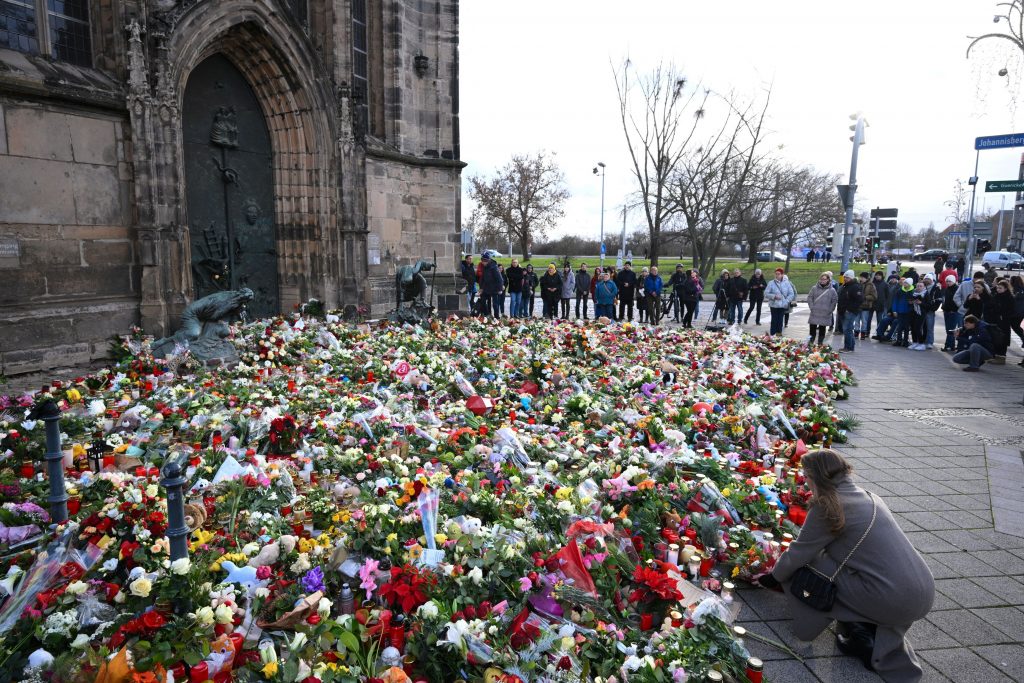BUENOS AIRES—The self-styled anarcho-capitalist who won Argentina’s presidency on Sunday plans to ditch his nation’s peso and adopt the U.S. dollar as the national currency.
President-elect Javier Milei’s top campaign proposal was aimed at eradicating rampant inflation that has for decades ravaged Latin America’s third-biggest economy by removing the battered national currency from circulation and stripping the central bank of its power to print money.
Uncontrolled money-printing to cover public expenditures, economists say, has fueled 143% inflation, one of the world’s highest.
“Closing the central bank is a moral obligation,” Milei said late Sunday.
But getting support from Argentina’s congress and implementing his so-called dollarization plan could be rife with challenges. Other countries that have dollarized are far smaller, like El Salvador. With Argentina broke, economists say the country doesn’t have the funds to carry out as ambitious a proposal as dollarization. In recent years, the country has lost access to global debt markets.
“To begin with, you need access to capital markets to convert the entire monetary base into dollars, and you don’t have them,” said Alejandro Werner, an economist who served as head of the Western Hemisphere department of the International Monetary Fund.
After his victory Sunday, Milei vowed to overhaul Argentina’s bloated government, cut down on spending, open the country’s economy to global markets and sell state-run companies such as oil firm YPF. He was cheered by an ecstatic crowd of supporters chanting: “They should go!,” in reference to the populist Peronist movement that has ruled Argentina for most of the past two decades.
Some Argentine assets rallied in New York. Shares in YPF jumped 36% in anticipation of Milei’s ambitious privatization plans. Grupo Financiero Galicia SA was up 20%.
Milei, a 53-year-old libertarian economist and political outsider who pledged during his campaign to lay waste to a political establishment he called corrupt, says his country’s currency “isn’t even worth excrement.” He told his fellow Argentines that it is crazy to save in pesos.
“Never in pesos,” he said during the campaign. “That garbage isn’t even useful as fertilizer.”
A major hurdle for Milei’s plans to swap out the peso is a divided congress in which no political faction holds a majority. The left-leaning Peronism movement that will rule Argentina until Milei’s Dec. 10 inauguration, as well as the center-right Together for Change coalition founded by former President Mauricio Macri, each hold less than half of the seats in the senate and lower house.
In his victory speech, Milei thanked the center-right coalition for helping secure his win, but he didn’t mention dollarization. It remains unclear how independents and moderates, who make up the remaining seats of the legislature, will respond to Milei’s agenda.
The courts are another challenge. In September, Supreme Court magistrate Horacio Rosatti told Spanish newspaper El País that replacing the peso with a foreign currency would be unconstitutional and violate national sovereignty.
In a report Sunday, Goldman Sachs economists said, “As with everything in economics, there is no free lunch, and adopting, preserving and benefiting from dollarization could be challenging.”
If Argentina adopts the dollar, it would join a handful of other, smaller nations in the region that use the greenback, including Ecuador, El Salvador and Panama.
Dollarization provided those countries with economic stability by bringing inflation under control and lowering interest rates, while at the same time making it impossible for governments to print money to cover budget gaps.
But dollarization in Ecuador and El Salvador didn’t automatically generate a correction in public finances, economists say. Panama, which adopted the dollar in 1904 shortly after achieving independence, has investment-grade debt ratings, but highly indebted El Salvador doesn’t. Nor does Ecuador, which last defaulted on its debt in 2020.
“Dollarization is not a silver bullet,” said Augusto de la Torre, who served as Ecuador’s central bank governor in the 1990s before the country adopted the dollar.
“It’s not a substitute for structural reform,” he said. “But undoubtedly it can provide nominal stability. It can give you a much more stable financial transactions environment, and a much more stable inflation rate,”
Dollarization works best for countries that are well-integrated into the global economy, analysts say, a potential challenge for Argentina, a G-20 country that is one of the world’s most closed economies.
Argentina’s commodity-based export platform also has a different business cycle than in the U.S., unlike in Panama. That means that monetary policy decisions in the U.S. could have an adverse effect on Argentina’s economy.
Without its own currency, Argentina would lack monetary tools to cushion external shocks, economists say.
“Argentina has no flexibility to absorb shocks like a sharp decline in export prices, agricultural price volatility, oil price increases, the impact of war on demand for your exports, political instability leading to withdrawal of deposits,” said Martin Castellano, head of Latin America research at the Washington-based Institute for International Finance.
In El Salvador and Ecuador, dollarization remains popular more than two decades after both nations adopted the dollar.
In Ecuador in early 2000, then-President Jamil Mahuad announced dollarization amid a brutal financial crisis sparked by devastating El Niño floods that destroyed banana plantations, a key export industry.
The country was hit by a run on the banks, a run on the currency and defaulted on its debt.
“It was a perfect storm,” Mahuad said in an interview. “We were really suffering…and needed to find a way to survive.”
As inflation quickly rose, long lines formed outside of banks as Ecuadoreans tried to take out their money and exchange it to dollars. Mahuad’s government responded by freezing bank accounts.
In January 2000, Mahuad went on television to announce that his government would ditch the sucre currency for the dollar.
“That was the last resort,” said Mahuad, who was ousted about 10 days later in a military coup. “That wasn’t part of the political campaign, it was not discussed. It was a response to the need to survive in economic terms.”
The dollarization announcement quickly restored financial stability to Ecuador, which has had annual inflation averaging 2.8% for the last two decades. Inflation had hit a high of nearly 100% in 2000.
Ecuadoreans then, like Argentines today, were so accustomed to using dollars that they used them as a hedge against volatility. The government used Coca-Cola trucks to move dollars into small Andean towns and remote jungle villages to exchange them for sucres.
El Salvador followed soon after. At the time, it had low inflation, sufficient currency reserves and a stable exchange rate, but interest rates reached about 17%.
“There are two ways of looking at dollarization, that of Ecuador and that of El Salvador. The case of Argentina is more similar to that of Ecuador,” said Rafael Barraza, who served as central bank chief when El Salvador adopted the U.S. dollar more than two decades ago.
In El Salvador, the government’s dollarization had the support of the International Monetary Fund, the U.S. Treasury and the World Bank. “They accompanied us with the technical design,” Barraza said. “They were very aware of what was happening, there was no perception that it was something improvised.”
Like Ecuadoreans before dollarization, many Argentines have a similar aversion to their currency, which has lost about 90% of its value against the dollar on the black market since the start of the current administration in 2019. Locals stash tens of billions of dollars in greenbacks abroad, far more than other Latin American countries, while others prefer to hold volatile cryptocurrencies.
Argentina would need to borrow some $30 billion to dollarize its economy, analysts say, at a time when it is essentially cut off from capital markets. That amount could be less if the peso undergoes an even bigger devaluation. However, that would raise the risks of hyperinflation, economists say.
“Argentina is like a patient in critical condition, and perhaps you apply a treatment that you wouldn’t do on a healthy patient, but there’s nothing else to do,” Sergi Lanau, director of emerging markets strategy at Oxford Economics, a U.K.-based research firm. “It’s an imperfect measure.”


